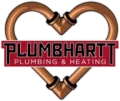If you own or operate a business in Vancouver, plumbing safety is more than just convenience—it’s a responsibility. One of the most important safeguards in commercial plumbing is backflow prevention. But what is backflow prevention, and why should Vancouver businesses care? Let’s break it down.
What Is Backflow?
Backflow happens when the normal flow of water in your pipes is reversed. Instead of clean, fresh water flowing into your building, contaminated water can flow back into the system. This can occur because of:
- A sudden drop in water pressure (back-siphonage)
- An unexpected increase in pressure in connected systems (back-pressure)
When this happens, pollutants like chemicals, cleaning solutions, or even wastewater can enter the drinking water supply.
What Is Backflow Prevention?
A backflow prevention device (often called a backflow preventer or backflow assembly) is installed in your plumbing system to keep clean water and contaminated water separate. It acts as a one-way gate, ensuring that dirty water can’t flow back into the public water supply.
In Vancouver, many commercial properties—like restaurants, medical clinics, and multi-unit buildings—are required to have these devices installed and tested regularly.
Types of Backflow Prevention Assemblies
Not all backflow prevention devices are the same—different types are used depending on the level of risk associated with the water connection:
- RPBA (Reduced Pressure Backflow Assembly): Offers the highest level of protection. Used where the risk of contamination is severe (e.g., chemical connections, labs, medical facilities).
- DCVA (Double Check Valve Assembly): Suitable for moderate-risk connections, such as commercial boilers or irrigation systems.
- PVB (Pressure Vacuum Breaker): Commonly used for outdoor irrigation and landscaping systems. Provides protection against back-siphonage only.
- SVB (Spill-Resistant Vacuum Breaker): Similar to PVB but designed to minimize water discharge during operation, making it useful in indoor settings.
By choosing the right device, your property stays protected based on its unique needs and risk profile.
Risk Severity Levels
The City of Vancouver categorizes backflow risks into levels to determine which type of device is required:
- Low Risk: Situations where contaminants are not harmful to health (e.g., minor nuisance substances).
- Moderate Risk: Substances that could cause illness or discomfort but are unlikely to be life-threatening (e.g., heating systems, food prep areas).
- Severe/High Risk: Substances that pose a significant health hazard, such as chemicals, wastewater, or medical waste. These require the highest level of backflow protection, typically an RPBA.
Understanding the severity of risk helps ensure the correct device is installed and maintained for maximum safety.
Why Backflow Prevention Matters for Vancouver Businesses
For businesses, the stakes are high. Backflow issues can:
- Contaminate the city’s water supply, posing health risks
- Lead to fines or compliance issues if devices are not properly installed or tested
- Damage your business reputation if customers or tenants are affected
- Result in costly repairs or downtime if left unchecked
By installing and maintaining a certified backflow prevention device, you’re not only protecting your business—you’re safeguarding your employees, customers, and the entire community.
Backflow Testing Requirements in Vancouver
Did you know the City of Vancouver requires annual backflow testing for many commercial properties? These tests must be performed by a certified backflow tester, and records must be submitted to ensure compliance.
Skipping tests or delaying repairs can result in penalties, so it’s best to stay ahead of the schedule.
Partner with Plumbhartt for Backflow Prevention
At Plumbhartt Plumbing & Heating, we specialize in backflow prevention and testing across Vancouver. Our certified technicians will:
- Install new backflow prevention devices
- Perform annual backflow testing and submit records
- Provide repairs or replacements if your device fails inspection
- Keep your business in full compliance with city regulations
💡 Helpful Tip: If this blog clarified backflow prevention for you, please leave us a quick review here. It helps other Vancouver businesses find trusted plumbing support!
Keep Your Business Protected
Backflow prevention isn’t just another box to check—it’s a vital step in protecting your business and community. Whether you need installation, testing, or emergency service, Plumbhartt is here to help businesses across Vancouver stay compliant and safe.
Contact us today to schedule your backflow testing or learn more about how we can support your business.
